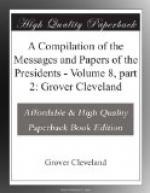By the act of March 2, 1821, it was ordained that the military peace establishment should consist of 4 regiments of artillery and 7 of infantry, with such officers of engineers, ordnance, and staff as were therein specified. It is provided that each regiment of artillery should consist of 1 colonel, 1 lieutenant-colonel, 1 major, and 9 companies, with the usual company officers, 1 of which to be equipped as light artillery, and that there should be attached to each regiment of artillery 1 supernumerary captain to perform ordnance duty, thereby merging the regiment of artillery and Ordnance Department into these 4 regiments. It was provided also that each regiment of infantry should consist of 1 colonel, 1 lieutenant colonel, 1 major, and 10 companies, with the usual company officers. The Corps of Engineers, bombardiers excepted, with the topographical engineers and their assistants, were to be retained under the existing organization. The former establishment as to the number of major generals and brigadiers was curtailed one-half, and the office of Inspector and Adjutant General to the Army and of adjutant-general to each division annulled, and that of Adjutant General to the Army instituted. The Quartermaster, Paymaster, and Commissary Departments were also specially provided for, as was every other branch of the staff, all of which received a new modification, and were subjected to the Rules and Articles of War.
The immediate and direct operation of this act on the military peace establishment of 1815 was that of reduction, from which no officer belonging to it was exempt, unless it might be the topographical engineers; for in retaining the Corps of Engineers, as was manifest as well by the clear import of the section relating to it as by the provisions of every other clause of the act, reference was had to the organization, and not to the officers of the Corps. The establishment of 1815 was reduced from 10,000 to about 6,000 men. The 8 battalions of artillery, constituting what was called the corps of artillery, and the regiment of light artillery as established by the act of 1815, were to be incorporated together and formed into 4 new regiments. The regiments of infantry were to be reduced from 9 to 7, the rifle regiment being broken. Three of the general officers were to be reduced, with very many of the officers belonging to the several corps of the Army, and particularly of the infantry. All the provisions of the act declare of what number of officers and men the several corps provided for by it should thenceforward consist, and not that any corps as then existing or any officer of any corps, unless the topographical engineers were excepted, should be retained. Had it been intended to reduce the officers by corps, or to exempt the officers of any corps from the operation of the law, or in the organization of the several new corps to confine the selection of the officers to be placed in them to the several corps of the like kind then




